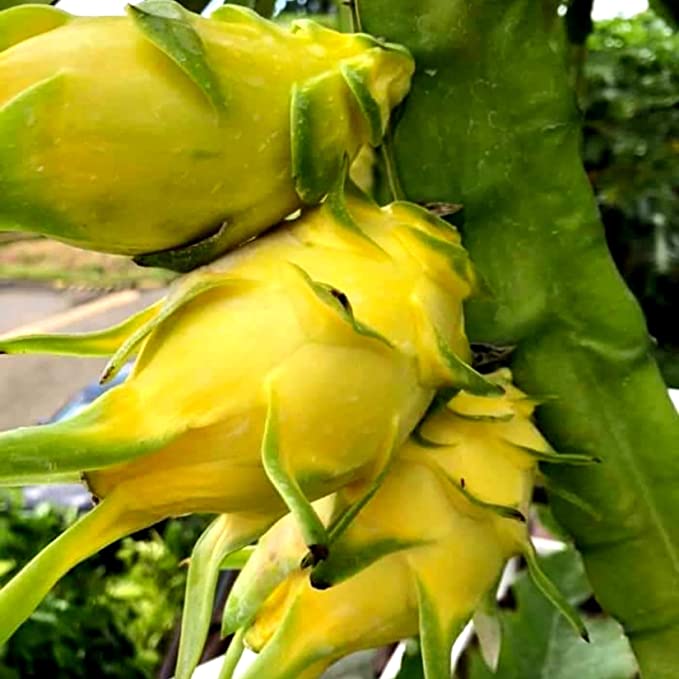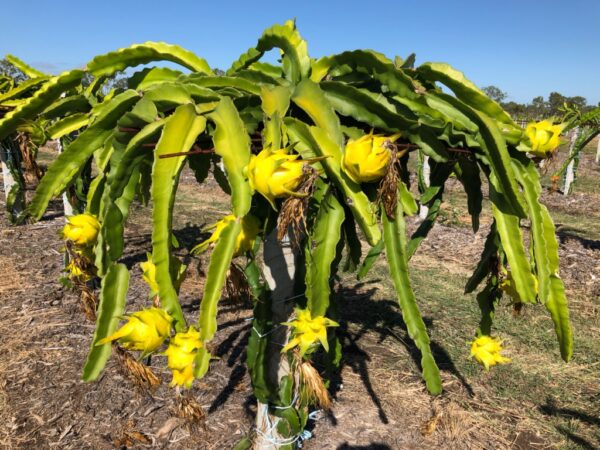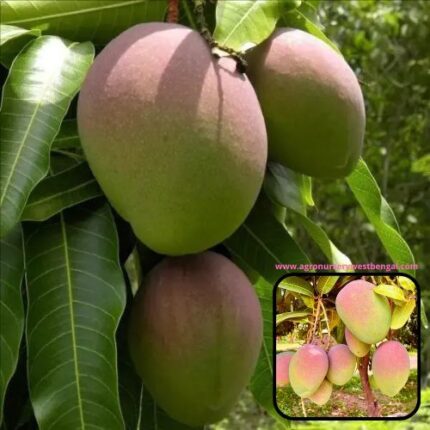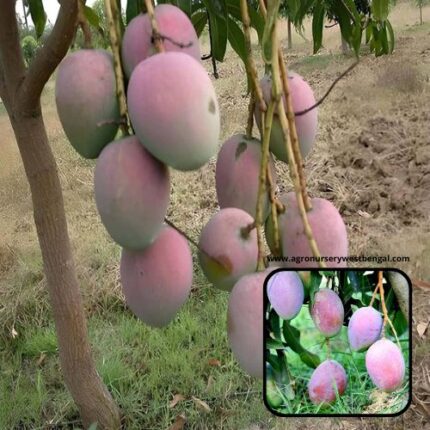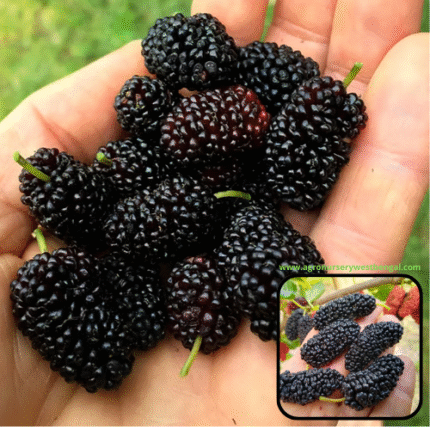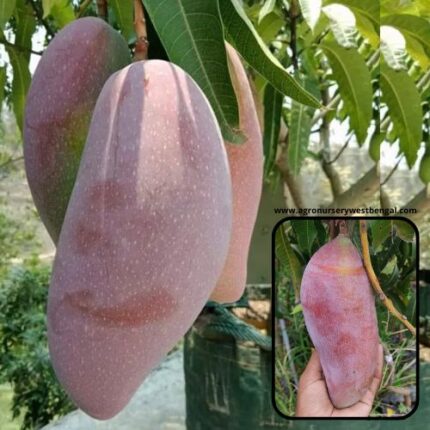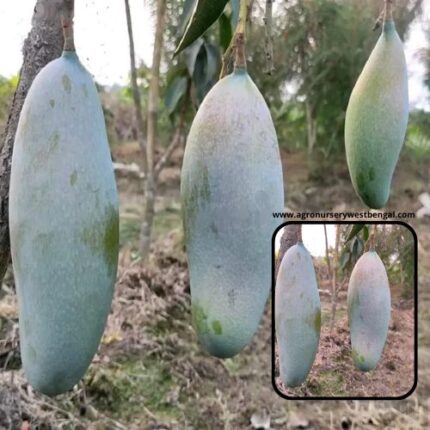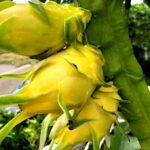

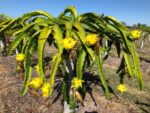
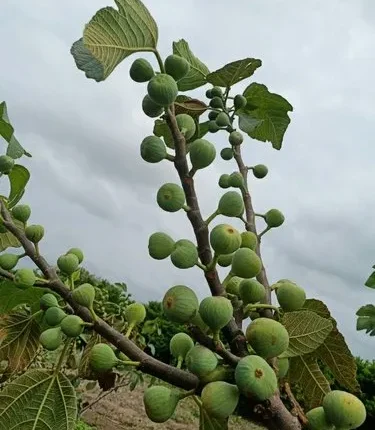
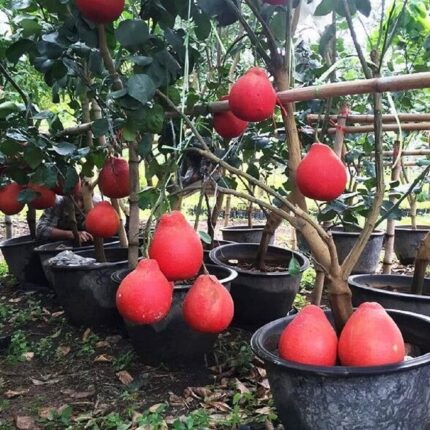
Yellow Dragon fruit plants
₹699 Original price was: ₹699.₹399Current price is: ₹399.
“Yellow Dragon Fruit,” also known as Pitahaya Amarilla or sometimes Golden Pitaya, is a distinct and highly prized variety of dragon fruit. While the red-skinned varieties are more commonly seen, the yellow variant is often considered the sweetest of all dragon fruits.
Here’s a detailed description of Yellow Dragon Fruit:
1. Botanical Classification:
- Scientific Name: Primarily Selenicereus megalanthus (formerly Hylocereus megalanthus). This species is distinct from the Hylocereus undatus (red skin, white flesh) and Hylocereus polyrhizus (red skin, red/purple flesh) varieties.
- Family: Cactaceae (Cactus family), as it grows on a vining cactus plant.
2. The Plant (Cactus):
- Growth Habit: Like other dragon fruit varieties, it grows on a climbing, vining cactus that requires support (like a trellis or post) to grow.
- Stems: The stems are typically green and segmented, with small, soft spines or bracts.
- Flowers: Produces large, beautiful, nocturnal white flowers, which are often called “moonflowers” or “Queen of the Night” because they bloom only for one night.
3. The Fruit:
- Appearance:
- Shape: Typically ovoid or slightly round, often smaller than the red-skinned varieties, but can still be a good size.
- Skin: The most distinguishing feature is its bright, vibrant yellow skin when ripe. Unlike the “scales” of red dragon fruit, the yellow variety has more prominent, smooth, curved spines or bracts that resemble little bumps or “horns” on the surface. These are typically soft and easily brushed off when ripe.
- Flesh (Pulp): The internal flesh is translucent white or creamy white, sometimes almost clear, and very juicy.
- Seeds: Contains small, edible, black seeds, which are typically slightly larger and fewer in number than those found in red dragon fruit varieties. They are distributed throughout the flesh, similar to kiwi seeds.
- Taste and Flavor Profile:
- Sweetness: This is its main draw. Yellow Dragon Fruit is widely regarded as the sweetest of all dragon fruit varieties. Its Brix (sugar content) can be quite high, often in the low to mid-20s.
- Flavor Notes: It has a mild, sweet, and distinctly floral taste, often described as a delightful cross between a kiwi and a pear, with hints of honey or even a very subtle lemon/lime aftertaste.
- Lack of Earthiness: It tends to have less of the earthy or subtle green flavor that some find in the white-fleshed, red-skinned varieties.
- Texture: The flesh is juicy and has a refreshing texture, similar to a ripe kiwi or a soft pear, with the pleasant crunch of the small seeds.
- Aroma: A ripe yellow dragon fruit has a delicate, sweet, and inviting aroma.
4. Ripeness:
- A ripe Yellow Dragon Fruit will have a uniformly bright yellow skin. It should feel slightly soft to the touch, similar to a ripe avocado, and will likely feel heavy for its size due to its high water content. The spines on the skin may dry out slightly.
5. Culinary Uses:
- Fresh Eating: The most common and best way to enjoy Yellow Dragon Fruit is fresh. Simply cut it in half and scoop out the flesh with a spoon, or slice it into cubes or wedges.
- Smoothies and Juices: Its sweetness and juiciness make it excellent for blending into refreshing smoothies, juices, and shakes.
- Fruit Salads: Adds a beautiful color contrast and sweet flavor to fruit salads.
- Desserts: Can be used in sorbets, ice creams, and other light desserts.
- Savory Dishes: Sometimes incorporated into fresh salsas or seafood dishes for a hint of tropical sweetness.
6. Nutritional Value and Health Benefits: Yellow Dragon Fruit is not just delicious but also nutritious:
- High in Fiber: An excellent source of dietary fiber, promoting healthy digestion, preventing constipation (often noted for its natural laxative effect), and supporting gut health by acting as a prebiotic.
- Good Source of Vitamin C: A powerful antioxidant that boosts the immune system, promotes healthy skin, and aids in iron absorption.
- Contains Antioxidants: Rich in various antioxidants, including flavonoids and hydroxycinnamates, which help protect cells from damage by free radicals.
- Minerals: Provides essential minerals like magnesium (important for nerve and muscle function, bone health), calcium, and iron.
- Healthy Fats: The tiny black seeds are a source of healthy omega-3 and omega-9 fatty acids.
- Low in Calories: A relatively low-calorie fruit, making it a healthy snack option.
- Hydrating: High water content contributes to hydration.
Comparison to Red Dragon Fruit (Red Skin, White/Red Flesh):
- Sweetness: Yellow Dragon Fruit is generally considered significantly sweeter.
- Flavor Profile: Yellow has a more floral/honeyed sweetness; red (white flesh) is milder and earthier; red (red flesh) is sweeter than white but often has a berry-like note.
- Skin: Yellow has prominent, softer spines; red has “scales” (bracts).
- Flesh Color: Yellow always has white/translucent flesh; red varieties can have white or red/purple flesh.
- Seed Size/Quantity: Yellow tends to have slightly larger but fewer seeds.
In summary, Yellow Dragon Fruit is a vibrant, sweet, and refreshing tropical fruit distinguished by its bright yellow, spiny skin and translucent white, juicy flesh with edible black seeds. It’s a favorite for its superior sweetness and delicate flavor

